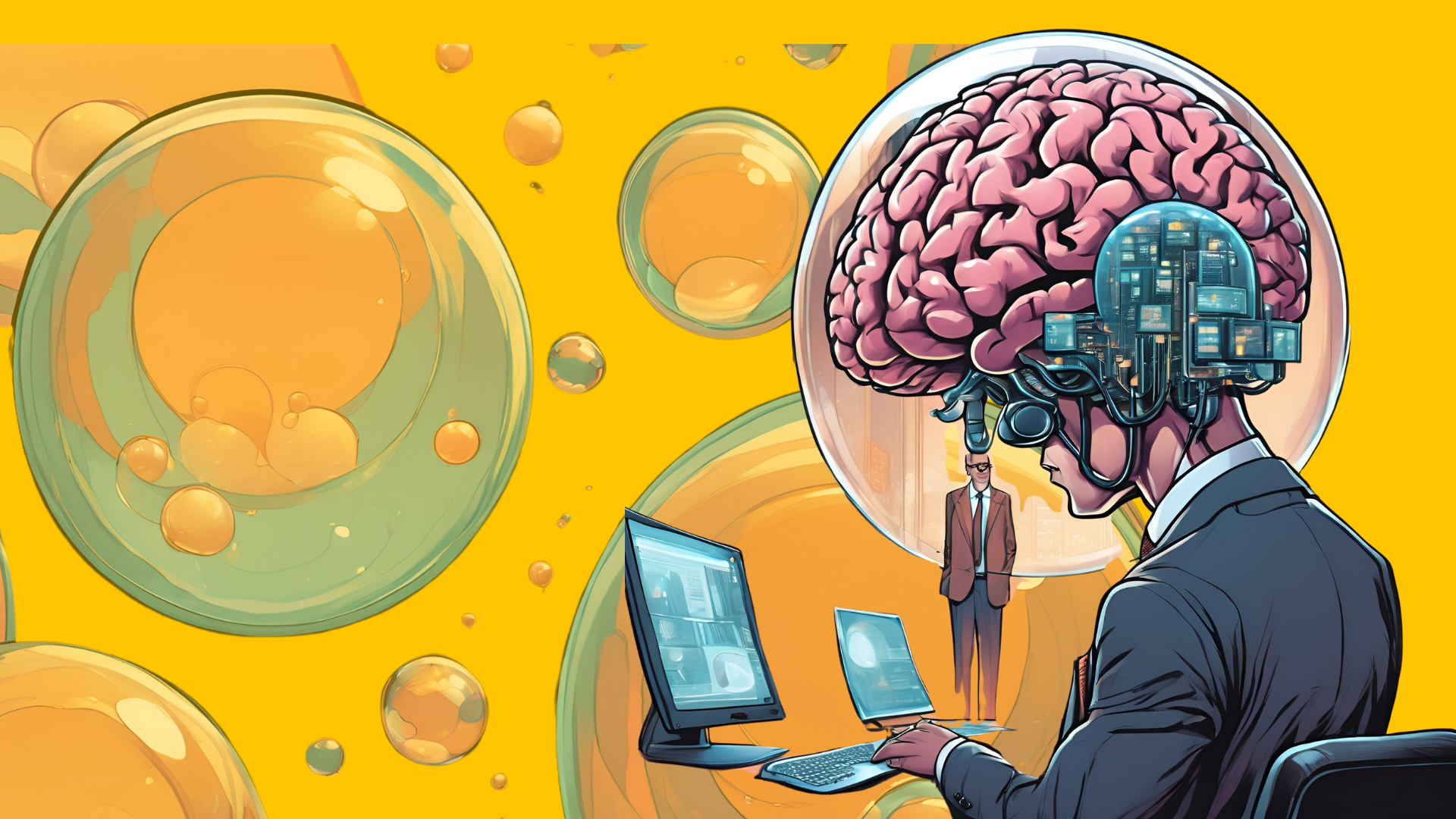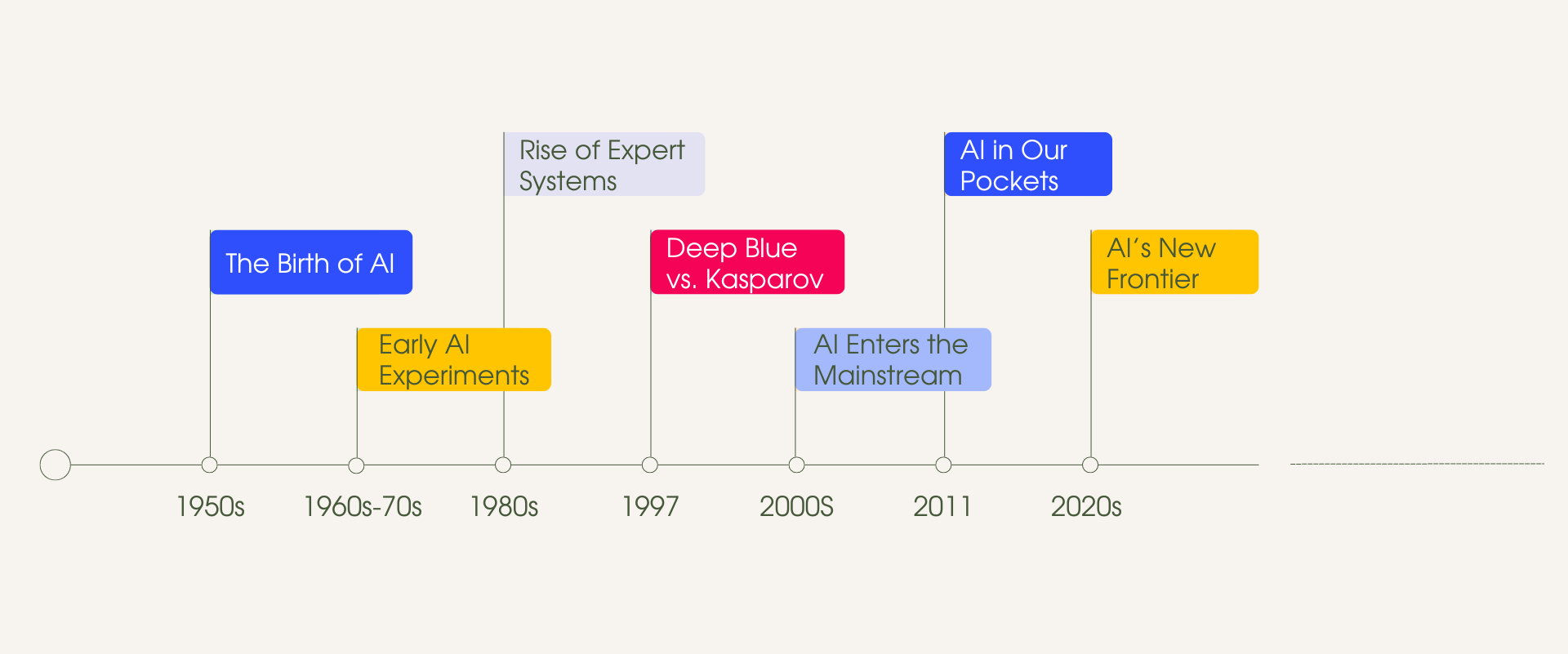The Next Web conference talks have inspired us to look at the development of AI. For many years, Moqod has been researching what is necessary for it to achieve its maximum capabilities. We were already involved in a number of remarkable projects applying artificial intelligence before the recent wave of interest began. Therefore, let us observe how AI has grown and what are the requirements for its utilization.

A Short History of AI (Yes, It Really Has Been Around That Long!)
Believe it or not, chatbots like ChatGPT and self-driving cars aren’t new — they’ve been in the making for over 70 years! Here’s a more detailed look at AI’s history, with a glimpse into how each milestone influences modern AI.
1950s: The Beginning of It All
Back in the early ‘50s, British mathematician Alan Turing asked a simple question: Can machines think? His answer was the Turing Test, a method to determine if a machine can mimic human intelligence. Fast forward to now, and this idea still shapes how we develop AI. Think of today’s natural language processing and chatbots — they’re all about making machines communicate like us, humans.
1956: The Dartmouth Conference
AI officially got its name in 1956 at the Dartmouth Conference. It was a time of big dreams and even bigger ideas. That same spirit of collaboration is what drives AI today. Whether it’s data science, cloud computing, or something else, it takes a village to build AI that works.
1960s-1970s: The First AI Programs
The ‘60s and ‘70s saw the birth of early AI programs like ELIZA and Shakey. ELIZA was an early chatbot that played therapist, asking, “How does that make you feel?” It’s a precursor to today’s virtual assistants. Shakey, on the other hand, was a robot that could move around and make basic decisions. Both were science experiments, but also, they laid the groundwork for modern AI. Today’s virtual assistants and robots owe a lot to these early pioneers.
1980s: Expert Systems Take the Stage
In the ‘80s, developers created expert systems that imitated human decision-making. They might seem old-school now, but without them, we wouldn’t have today’s AI in healthcare, finance, or engineering. The basics of these systems still guide modern AI, just with way more data and smarter algorithms.
1997: A Game-Changing Moment
Remember when IBM’s Deep Blue beat chess champ Garry Kasparov in 1997? That was huge. It showed the world that AI could take on complex problems. Today, the lessons from Deep Blue are alive in AI models optimizing everything from supply chains to personalized ads.
2000s: AI Goes Mainstream
The 2000s were a decade that showed great strides. It was not just limited to natural language processing and computer vision but also robotics among others. All these improvements act as the foundation for modern artificial intelligence which uses them in various applications such as face recognition or autonomous vehicles.
2011: AI in Your Pocket
In 2011, when Siri was launched by Apple Inc., it dawnsed on many people that artificial intelligence had become an integral part of our lives. No longer was it just a thing for tech nerds; in fact, they were now tools used by everyone around us. These days voice assistants are much smarter than ever due to real-time information input, robust cloud computing resources and strong security measures.
2020s and Beyond: The Era of AI Dominance?
Jumping to the 2020s, we find that AI has become a necessary component of daily life. Its reach extends from healthcare through finance and into how we communicate or entertain ourselves. This year alone saw unprecedented progress in artificial intelligence systems, which enabled both start-ups and established corporations to innovate faster than ever before. Some said that your product wouldn’t get noticed if you don’t claim it using AI.

Balancing Hype with Reality: AI’s Lasting Impact
As AI spreads into every corner of our lives, it’s also stirring up debate. People are questioning how sustainable it really is. There’s also a concern that AI might be overhyped. Some critics think this AI boom is another bubble that could pop big time. It may or it may not, and most likely, like other next-big-things, it will find its various vocations in most industries.
At Moqod, we understand the excitement around AI. But we also know it’s crucial to stay grounded. We need a clear strategy for developing and integrating AI. Reviewing the history of AI’s growth, we are certain that continued rethinking of what AI can truly bring to exact business cases is key and should become a recurrent item in our agendas. The future of AI isn’t just about innovations. It’s about making sure those innovations rest on a solid foundation of data integrity, security, and ethics.
As a software development company deeply involved in this tech revolution, we’re focused on tapping into AI’s real potential. We work on AI solutions that are innovative but also built to last and adapt as needs change. Our goal is to create products that go beyond trends and make a lasting impact, ensuring AI stays beneficial even after the initial excitement fades.
You might also find these articles about ai interesting
Case Study: Meet Anna, Moqod's AI-Powered Customer Service Agent
AI Advancements in the Tech Industry: ChatGPT and Beyond
Conclusion
While AI has a storied past and an exciting present, its future will depend on how we, as innovators, choose to shape it. At Moqod, we are ready to lead the way. Just contact us to talk about your AI solution!





